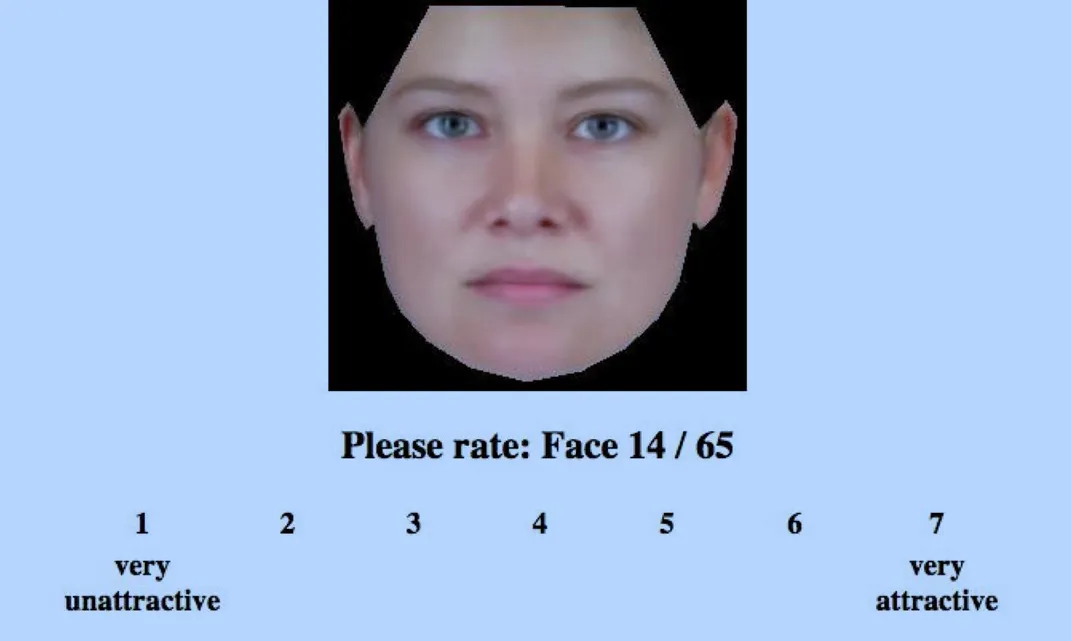What’s Beautiful? It Depends on What Your Eyes Have Already Beheld
Opinions about beauty may be shaped just as much by past social interactions as by our genes
/https://tf-cmsv2-smithsonianmag-media.s3.amazonaws.com/filer/25/6e/256e5257-2110-4fa2-a73b-0477213d96cc/istock_000074272595_medium.jpg)
Beauty really is in the eye of the beholder, because much of what attracts us to other people is guided by our individual life experiences, according to a survey that asked thousands of volunteers to rate the attractiveness of various multinational faces.
There are some universal aspects of human faces, like symmetry, that most people find attractive. But these common aesthetic preferences account for only about 50 percent of our total attraction to a face, the new study suggests.
The other half of the equation is very personal—and even the remembered face of a childhood girlfriend or boyfriend might have a lifelong impact on our preferences. That's why even identical twins with the same genes don't always fancy the same faces.
“People will generally agree that Brad Pitt is an attractive guy,” says study co-author Jeremy Wilmer, a Wellesley College psychologist. “There might be some very interesting debates around the dinner table about whether he's a 7 or a 4. But the reason that supermodels make loads of money is that, on average, lots of people think they are pretty attractive.”
The source of our shared preferences has long been a topic of debate. Some previous research has suggested an evolutionary role, likely tied to healthy and successful reproduction, while other studies stress the role of culture in shaping our tastes.
Rather than focus on what makes someone universally attractive, though, Wilmer and his colleagues wanted to explore the extent to which beauty is up to the individual eye, and where our peculiar preferences come from.
They set up a website featuring 200 widely different faces—including computer-generated visages and stock photos from many nations—to better mimic what we see in the real world and gain insight on attractiveness in the broadest sense.
First some 35,000 volunteers visited the site to rate the 200 faces on an attractiveness scale from 1 to 7. This helped refine the way the authors tested for individual face preferences, and it also reinforced the notion that a person's preferences are somewhat predictable.
“It turns out that we can predict about 50 percent of a random person's preferences with another random person's preferences,” Wilmer explains. “But then the other 50 percent of our preferences are different.”

The scientists then gave the same test to 547 pairs of identical twins and 214 pairs of non-identical twins, to see how known levels of shared genes impacted attractiveness preferences. The team found that the 50-50 breakdown applied even among people with nearly all the same genes.
“There's something here even in identical twins, who share the same genes and families, that's really making them different,” Wilmer says.
Previous twin studies of human perception, thought and behavior tend to show that genes have a very large impact, Wilmer notes. Even tests of a similar behavior, facial recognition, turned out to be largely driven by genetics.
“So it was really surprising that our study found such a relatively low impact of genes and a higher impact of environment,” he notes.
Personal experience appears to be at the core of our individual preferences, he says, including past social interactions with various people or media images of faces.
“It's not socioeconomic status or the schools you went to,” he notes. “Most twins go to the same school. I like to think of it this way: Yes, identical twins have the same genes and the same family, but as they walk down the street they aren't joined at the hip. They are going to have different friends and different significant others.”
Next steps may include trying to identify the specific aspects of faces that factor into individual attraction, and untangling which of our experiences have the biggest impact.
“Is it experiences with friends and significant others, or is it just the experiences of walking down the street and passing by a unique bunch of people that nobody else passed by in exactly the same way?” he asks.
The group also hopes to explore how much individual experiences or genetics influence other things we think of as beautiful.
“What about works of art or music or different colors and landscapes or all sorts of other things we might look at?” Wilmer asks. “They can all get back to this broad philosophical question: What is beauty, how much of it is in the eye of the beholder and where does it come from?”